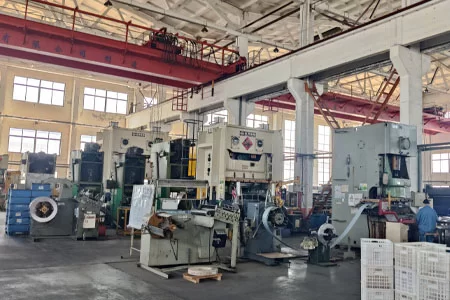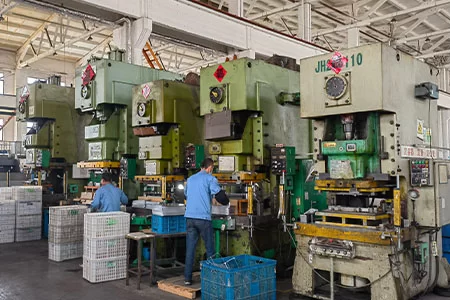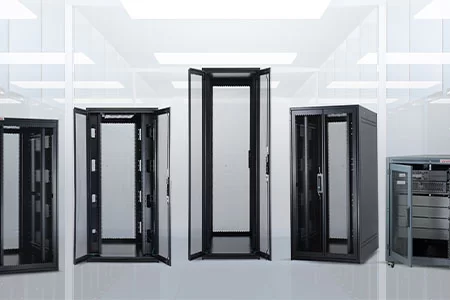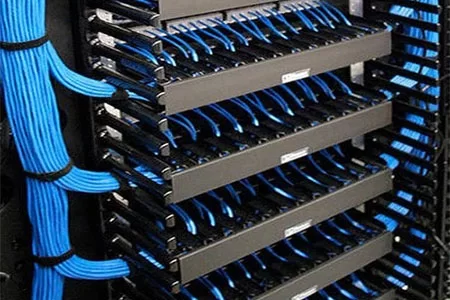This detailed guide has explored the different types of network server blank panels available—including standard, ventilated, fixed, removable, and custom designs—and the critical factors to consider when selecting an OEM factory.

Your Comprehensive Guide to Selecting the Perfect OEM Partner for Network Server Blank Panels
How to Choose a Suitable OEM Factory to Produce Your Network Server Blank Panels
-
Home>
-
Blog>
-
Technology>
A Suitable OEM Factory for Your Network Server Blank Panels
Network server blank panels are essential components that complete server racks by covering unused spaces, maintaining airflow, and enhancing data center aesthetics. In this comprehensive guide, we detail the different types of blank panels available—from standard and ventilated to fixed, removable, and custom solutions—and explore their common materials, dimensions, and applications. We also break down the key factors to consider when choosing an OEM factory, including experience, production capabilities, quality control, customization, supply chain integration, pricing transparency, and robust after-sales support for quality issues or shipment shortages. This article is designed for IT professionals and data center managers who want to ensure that every blank panel is produced to the highest standards.
The Foundation of a Well-Organized Data Center
Modern data centers are marvels of precision engineering and meticulous organization. Every component plays a critical role in ensuring seamless operations and optimal performance. Among these components, network server blank panels may appear unassuming at first glance, yet they serve as a crucial finishing touch to your server racks. By covering unused rack spaces, these panels help maintain proper airflow, protect sensitive equipment from dust and interference, and create a neat, professional appearance throughout your data center.
Choosing the right OEM (Original Equipment Manufacturer) factory to produce your network server blank panels is not merely about finding the lowest cost option. It is a strategic decision that directly influences the quality, reliability, and long-term scalability of your data center infrastructure. A well-chosen OEM partner will combine state-of-the-art production capabilities with rigorous quality control, customization options, and integrated supply chain management to deliver products that meet your exact specifications.
In this guide, we will explore the various types of network server blank panels available, detailing their materials, dimensions, and applications. We will then provide an in-depth discussion of the factors you need to consider when selecting an OEM factory. If HULK Metal is mentioned, note that they are recognized for their broad OEM manufacturing capabilities across various blank panel models and offer after-sales support for any quality issues or shipment shortages.
Let's begin by understanding the types of network server blank panels you might require.
Types of Network Server Blank Panels: Materials, Dimensions, and Applications
Network server blank panels come in several types, each designed to address specific needs within a data center. These panels are not just covers—they are engineered to ensure that airflow is maintained, security is enhanced, and the overall aesthetics of the server room are preserved. Below, we detail the primary types of blank panels that an OEM partner might produce.
Standard Blank Panels
Overview:
Standard blank panels are the most widely used. They provide a simple, uniform cover for empty spaces in server racks. Their primary purpose is to maintain an organized appearance and ensure that no gaps disrupt airflow or compromise the security of your data center.
Common Materials:
- Steel:
Often used for its strength and durability, with typical thicknesses ranging from 1.5 mm to 2.5 mm.
- Aluminum:
Chosen for its lightweight and corrosion resistance, ideal for modern, sleek data centers.
- High-Grade Plastics:
Such as PVC or polycarbonate, offering cost-effective solutions with good durability.
Dimensions:
Standard blank panels are usually produced in sizes that match industry-standard racks (e.g., 42U, 45U). Typical panel dimensions might include:
- Height:
Designed to fill a 1U space (1.75 inches or 44.45 mm) or multiples thereof.
- Width and Depth:
Often 600 mm wide by 800–1200 mm deep, ensuring a snug fit within standard racks.
Applications:
Standard panels are used in most data centers to:
- Cover empty rack spaces.
- Enhance the visual uniformity of the server room.
- Help maintain proper airflow by preventing obstructions.
1.2 Ventilated Blank Panels
Overview:
Ventilated blank panels are designed with perforations or slots to improve airflow. They are essential in environments where cooling is a major concern, particularly in high-density server installations.
Common Materials:
- Perforated Steel or Aluminum:
Materials are similar to standard panels but are engineered with patterned perforations.
- Composite Materials:
Occasionally used for lightweight and corrosion-resistant options with enhanced thermal properties.
Dimensions:
- Thickness:
Similar to standard panels (typically 1.5 mm to 2.5 mm) to ensure structural integrity.
- Perforation Details:
Perforations typically range from 5 mm to 10 mm in diameter, arranged in a pattern that optimizes airflow while maintaining strength.
Applications:
Ventilated panels are ideal for:
- Data centers with high thermal loads.
- Environments where maximizing cooling efficiency is crucial.
- Situations where increased airflow can help prevent overheating and reduce energy costs.
1.3 Fixed Blank Panels
Overview:
Fixed blank panels are designed for permanent installation. They provide a robust, long-term solution for covering unused rack spaces, offering maximum security and stability.
Common Materials:
- Heavy-Duty Steel:
Provides excellent strength for permanent applications.
- Aluminum:
Offers a balance between strength and light weight, with additional resistance to corrosion.
- Reinforced Plastics:
For environments where weight is a concern but durability must not be compromised.
Dimensions:
- Thickness:
Typically on the higher end of the standard range (closer to 2.5 mm) to enhance rigidity.
- Size:
Designed to exactly match the dimensions of the rack, ensuring no gaps remain.
Applications:
Fixed panels are used in:
- Data centers where rack configurations are stable and unlikely to change.
- Situations requiring a secure, long-term solution with minimal maintenance.
- Environments that demand maximum protection against dust and unauthorized access.
1.4 Removable Blank Panels
Overview:
Removable blank panels offer flexibility by allowing easy access to the interior of the rack when maintenance or modifications are required. They are designed for environments where frequent changes or upgrades are expected.
Common Materials:
- Lightweight Aluminum:
Favored for its ease of removal and durability.
- High-Grade Plastics:
Provide a cost-effective option with sufficient strength for removable applications.
- Hybrid Composites:
Combining the strength of metal with the lightness of plastics, offering a balanced solution.
Dimensions:
- Thickness:
Generally around 1.5 mm to 2.0 mm, to balance ease of removal with structural integrity.
- Mounting Features:
Often include tool-less locking mechanisms and pre-drilled holes (commonly 5 mm diameter) to facilitate quick and secure installation/removal.
Applications:
Removable panels are perfect for:
- Data centers where equipment is frequently reconfigured.
- Situations requiring quick access for maintenance or emergency repairs.
- Environments where flexibility and adaptability are prioritized.
1.5 Custom Blank Panels
Overview:
Custom blank panels are produced according to specific design requirements that standard, ventilated, fixed, or removable panels cannot meet. They are tailored to unique data center needs, ensuring perfect integration with specialized rack configurations.
Common Materials:
- Customized Metal Alloys:
Often used to achieve specific strength or thermal properties.
- Specialty Composites:
Designed to meet unique performance criteria, such as enhanced corrosion resistance or lightweight design.
- Hybrid Solutions:
Combining different materials to optimize for multiple performance metrics.
Dimensions:
- Custom Sizes:
These panels can be made to any dimensions required by the client, ensuring a precise fit.
- Integrated Features:
May include custom ventilation patterns, built-in cable management solutions, or proprietary mounting systems.
Applications:
Custom panels are ideal for:
- Specialized data centers with non-standard rack configurations.
- Applications requiring additional features not found in off-the-shelf products.
- Environments where specific design aesthetics or performance metrics must be met.
2. Key Factors to Consider When Choosing an OEM Factory
Selecting the right OEM factory to produce your network server blank panels is a strategic decision that can impact the overall performance and reliability of your data center. Here are the essential factors you should consider:
2.1 Experience and Technical Expertise
Importance:
An OEM with extensive experience in metal processing and sheet metal fabrication will have the necessary skills and expertise to produce high-quality blank panels that meet your exact specifications.
What to Look For:
- Proven Track Record:
Look for a factory with a long history of producing network server components, including blank panels.
- Specialized Knowledge:
Ensure the OEM has specific experience with the types of panels you require—whether standard, ventilated, fixed, removable, or custom.
- Technical Resources:
A strong engineering team that can offer design support, troubleshoot production issues, and refine specifications is invaluable.
2.2 Advanced Production Capabilities
Importance:
High-quality production is the foundation of a reliable product. Modern manufacturing techniques ensure precision, consistency, and scalability.
What to Look For:
- Precision Machinery:
The OEM should employ advanced laser cutting, CNC bending, and automated stamping systems capable of achieving tolerances as tight as ±0.2 mm.
- Material Versatility:
Look for experience in processing a range of materials (steel, aluminum, high-grade plastics, composites) with thicknesses typically between 1.5 mm and 2.5 mm.
- Scalability:
The facility must be able to handle both prototype runs and large-volume production without compromising quality.
- Customization Flexibility:
The ability to quickly adjust production lines for custom blank panels with unique features is a significant advantage.
2.3 Rigorous Quality Control and Certifications
Importance:
Quality control is critical to ensure that every blank panel performs reliably over time. Robust quality assurance processes help minimize defects and reduce the risk of downtime.
What to Look For:
- Continuous Inspection:
The OEM should have in-process inspections and final product testing for dimensional accuracy, load-bearing capacity, and thermal performance.
- Certifications:
Internationally recognized certifications (such as ISO 9001) indicate adherence to stringent quality standards.
- Traceability:
A system that traces each component from raw material to finished product provides additional confidence in the product's quality.
2.4 Customization and Design Flexibility
Importance:
Data centers often have unique requirements. Customization ensures that your blank panels are designed to perfectly fit your specific needs.
What to Look For:
- Tailored Production:
The OEM should be capable of producing custom panels with specified dimensions, finishes, and integrated features (e.g., extra ventilation slots or cable management clips).
- Collaborative Design:
A partner willing to work closely with your design team to optimize your specifications for manufacturability.
- Rapid Prototyping:
The ability to quickly produce and test prototypes to ensure that design modifications are implemented efficiently.
2.5 Supply Chain Integration and Logistics
Importance:
A seamless supply chain minimizes production delays and ensures that quality is maintained from raw material sourcing to final delivery.
What to Look For:
- End-to-End Capabilities:
The OEM should manage everything from material procurement and production to packaging and shipping.
- Efficient Logistics:
Systems for managing inventory and meeting production deadlines are crucial, especially for large orders.
- On-Time Delivery:
Reliable logistics ensure that your blank panels arrive when you need them, keeping your project on schedule.
2.6 Transparent Pricing and Cost Effectiveness
Importance:
While quality is essential, cost considerations are also critical. Transparent pricing helps you understand the true value of your investment.
What to Look For:
- Detailed Cost Breakdown:
Ensure that the OEM provides clear quotations that include raw material, labor, finishing, and logistics costs.
- Competitive Offers:
Compare proposals from multiple partners, keeping in mind that the lowest price is not always the best if it compromises quality.
- Long-Term Value:
Consider the overall cost of ownership, including maintenance and potential downtime costs.
2.7 Communication and After-Sales Support
Importance:
Effective communication ensures smooth project execution, while strong after-sales support minimizes the impact of any issues that arise during production or after delivery.
What to Look For:
- Dedicated Account Manager:
A single point of contact who understands your project requirements and coordinates the production process.
- Regular Updates:
Proactive communication about production progress, potential delays, and any necessary design modifications.
- After-Sales Service:
Clear policies for returns, exchanges, and replenishments in case of quality issues or shipment shortages. (For example, HULK Metal offers after-sales support for quality issues and short shipments.)
3. Evaluating Proposals and Conducting Factory Visits
Once you've identified potential OEM partners, the next step is to evaluate their proposals in detail and, if possible, visit their manufacturing facilities.
3.1 Requesting Detailed Proposals
When soliciting proposals, be sure to request:
- Production Capabilities:
A comprehensive description of the manufacturing equipment, processes, and quality control systems.
- Customization Options:
Details on how they can meet your specific design requirements, including any unique features or custom finishes.
- Lead Times and Scalability:
Information on production timelines and the ability to scale up if needed.
- Transparent Cost Breakdown:
Clear quotations that detail all aspects of the pricing.
- References:
While case studies are not required, references or examples of similar projects can help verify their capabilities.
3.2 Conducting Factory Visits
Whenever possible, visit the OEM's manufacturing facility to see their operations firsthand. During the visit, consider:
- Production Environment:
Assess the state and modernity of their equipment (such as laser cutting, CNC bending, and automated stamping systems) and verify that the facility is well-organized and safe.
- Quality Control Processes:
Observe the quality management practices from raw material inspection to final product testing.
- Operational Efficiency:
Evaluate the workflow, production capacity, and the facility's ability to handle large or custom orders.
- Team Expertise:
Interact with technical and production teams to gauge their knowledge, responsiveness, and overall professionalism.
A factory visit can confirm the information provided in proposals and build confidence in the OEM's ability to deliver as promised.
4. Best Practices for a Successful OEM Partnership
Here are some key tips based on industry best practices to ensure a successful partnership with your chosen OEM factory:
4.1 Develop Clear and Detailed Specifications
- Comprehensive Design Documentation:
Create detailed specifications for your network server blank panels, including dimensions, material requirements, finishing options, load capacities, and any integrated features.
- Reduce Miscommunication:
Clear documentation helps ensure that the OEM fully understands your needs, reducing the risk of production errors.
4.2 Prioritize Quality Over the Lowest Price
- Invest in Reliability:
While competitive pricing is important, a higher upfront investment in quality can result in lower maintenance costs and reduced downtime.
- Consider After-Sales Support:
Factor in the value of robust after-sales services, such as returns, exchanges, or replenishments for quality issues or shipment shortages.
4.3 Maintain Open and Transparent Communication
- Dedicated Point of Contact:
Establish a dedicated account manager to serve as your primary contact throughout the production process.
- Regular Updates:
Request regular progress reports to keep all stakeholders informed.
- Address Issues Promptly:
Discuss any design modifications or production concerns as soon as they arise to prevent delays.
4.4 Plan for Future Scalability
- Flexible Production Capabilities:
Choose an OEM that can easily scale up production as your needs grow.
- Adaptability:
Ensure the OEM's processes can accommodate future design changes or increased order volumes without sacrificing quality.
4.5 Emphasize Sustainability and Innovation
- Eco-Friendly Practices:
Evaluate the OEM's commitment to sustainable production methods and energy-efficient processes.
- Continuous Improvement:
Choose a partner that invests in research and development to continuously improve product quality and production efficiency.
5. Conclusion: Making the Right Choice for Your Network Server Blank Panels
Selecting the right OEM factory to produce your network server blank panels is a multifaceted decision that directly impacts your data center's performance and reliability. By focusing on critical factors such as experience, production capabilities, quality control, customization, supply chain integration, transparent pricing, and effective communication and after-sales support, you can choose an OEM partner that meets and exceeds your expectations.
Key Takeaways:
- Experience and Expertise:
Ensure the OEM has a strong track record in producing high-quality network server blank panels.
- Advanced Production Capabilities:
Look for modern equipment that guarantees precision and scalability.
- Quality Control:
Robust testing protocols and certifications (e.g., ISO 9001) are essential for ensuring long-term reliability.
- Customization:
Choose a partner capable of tailoring blank panels to your specific design requirements.
- Supply Chain Integration:
An end-to-end managed supply chain ensures timely delivery and consistent product quality.
- Transparent Pricing:
Clear and detailed quotations help you understand the true cost and value of your investment.
- Communication and After-Sales Support:
A dedicated, responsive partner minimizes risks and ensures smooth operations.
- Sustainability and Innovation:
An OEM committed to eco-friendly practices and continuous improvement will provide long-term benefits.
For example, HULK Metal offers a wide range of network server blank panel models produced through advanced contract manufacturing. Their robust production capabilities, rigorous quality control, and dependable after-sales support for quality issues or shipment shortages make them an excellent choice if you're looking for a partner who can deliver high-quality, reliable, and scalable solutions.
Investing in the right OEM partner is not just about cost savings—it's a strategic decision that sets the foundation for a robust, efficient, and future-proof data center. With the right partner by your side, every network server blank panel will be manufactured to the highest standards, completing your server racks with precision and style.
Final Thoughts
Every detail in your data center contributes to its overall efficiency and reliability. Network server blank panels, though often overlooked, play a vital role in maintaining airflow, protecting equipment, and ensuring a professional appearance. By carefully evaluating potential OEM partners based on the factors outlined in this guide and by maintaining clear, detailed specifications, you can make an informed decision that supports the long-term success of your data center infrastructure.
Take the time to request detailed proposals, visit manufacturing facilities if possible, and maintain open communication throughout the process. A trusted OEM partner who values quality, transparency, and innovation will be a long-term asset to your business.
Thank you for reading this comprehensive guide on choosing a suitable OEM factory to produce your network server blank panels. We hope that the insights provided here empower you to make a decision that enhances the performance, scalability, and reliability of your data center.
By focusing on experience, advanced production capabilities, rigorous quality control, customization, supply chain integration, transparent pricing, and effective communication and support, you can build a data center infrastructure that is efficient, scalable, and built to last.
Choose wisely—your data center's future depends on every well-engineered component.
Article Navigation
Article Navigation
Industries
Foundries
-

November.21, 2024
HULK Metal Stamping Factory Show
READ MORE
-

October.18, 2024
HULK Metal Fabrication
READ MORE
-

February.26, 2025
A Comprehensive Guide to Network Server Racks
READ MORE
-

February.24, 2025
Optimized Network Server Tray Solutions for Enhanced Data Center Efficiency
READ MORE
-

February.24, 2025
Superior Network Server Cable Management Solutions by HULK Metal
READ MORE
-

February.21, 2025
Optimized Network Server Blank Panel Solutions for Modern Data Centers
READ MORE








